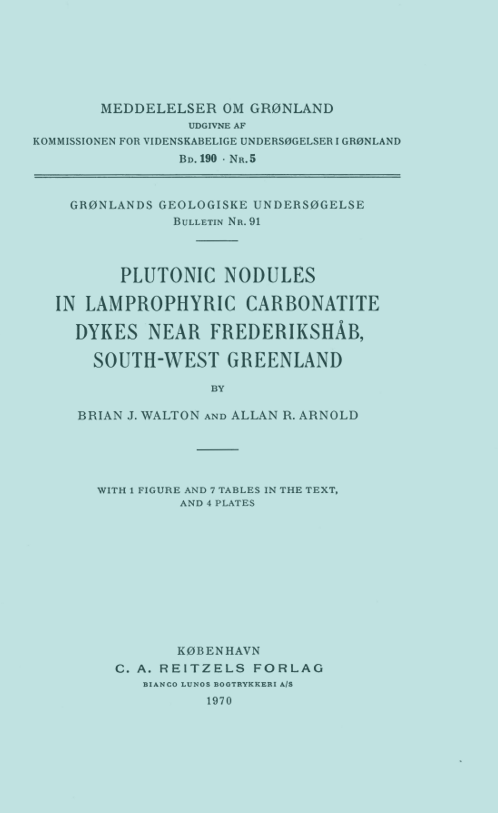Plutonic nodules in lamprophyric carbonatite dykes near Frederikshåb, South-West Greenland.
DOI:
https://doi.org/10.7146/mog.v190.150331Abstract
A swarm of thin NW-SE lamprophyric carbonatite dykes of Mesozoic age occurs south of Frederikshab associated with a contemporaneous, parallel swarm of thick dolerites. Apart from local country rock material, inclusions in the lamprophyric carbonatites are mainly of the following types: 1) Single crystals of olivine which were probably mainly derived from the upper
mantle. 2) Relatively unmodified garnet- and pyroxene-granulite nodules brought up from a lower crustal level. 3) Nodules, and single crystals, consisting mainly of hornblende and salite which are considered to have formed by metasomatic reaction
between the carbonatite magma and mainly acid to intermediate lower crustal rocks, possibly at relatively low levels in the dykes. Hornblende shows various stages of growth from initially small, iron-rich crystals to larger, iron-poor crystals which have commonly replaced pyroxenes. The pyroxenes show a similar but less pronounced development. li.) Alkaline nodules which are again thought to have developed by metasomatic reaction between the magma and country rock inclusions, but possibly at higher levels in the dykes. 5) Phlogopite megacrysts which may be partly xenocrystal but which are thought to have mainly crystallised from the
contaminated magma. Complete chemical analyses of lamprophyric carbonatites and partial analyses of individual minerals are presented.

Downloads
Published
How to Cite
Issue
Section
License
Coypyright by the authors and the Commision for Scientific Research in Greenland. No parts of the publications may be reproduced in any form without the written permission by the copyright owners.

